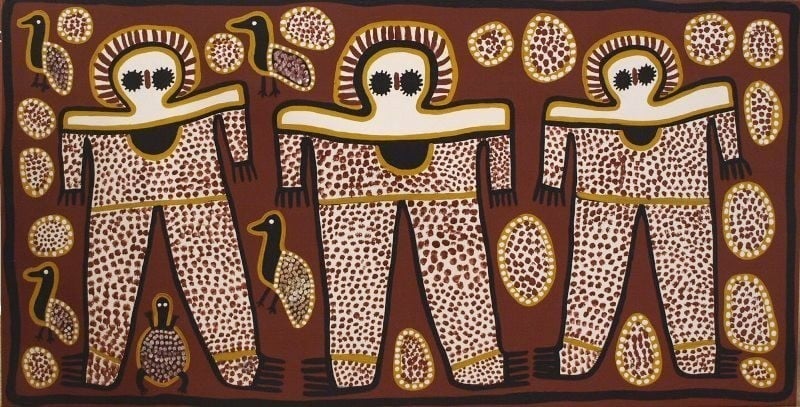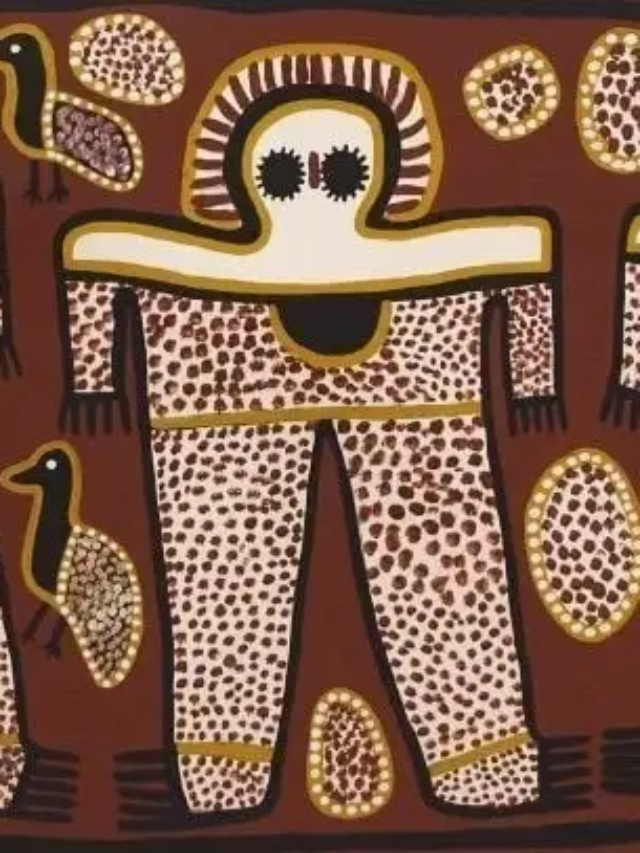Indigenous art has always been viewed as “primitive art” and confined to ethnographic institutions rather than art galleries by Western, non-Indigenous artists and critics. It is possible to appreciate Indigenous art forms while acknowledging that they are frequently produced in artistic traditions that diverge significantly from those connected to the fine arts institutions in the West.
These indigenous customs might not distinguish between art and ritual or daily life, and they might hold completely different beliefs about the metaphysical nature of beauty and depiction. Lastly, it looks at essential perspectives for comprehending and appreciating the dynamic evolution of Indigenous art that go beyond the notion that something is “traditional” if it hasn’t changed.
Art created by Australia’s indigenous people, also referred to as Aboriginal Australians, is called Aboriginal art. This artwork reflects the history, customs, and tales of the various Aboriginal people spread over the continent, giving it great cultural and spiritual significance. With a history spanning more than 40,000 years, Aboriginal art is among the world’s oldest continuously existing artistic traditions.
Key features of Aboriginal art
Dotwork is a widespread technique in Aboriginal art whereby elaborate patterns and motifs are created. Australia’s central and western desert regions are frequently linked to this approach. Aboriginal art is highly symbolic; each piece consistently tells a particular tale or carries cultural and spiritual values. Symbols represent aspects of the natural world, ancestors, and fundamental artistic ideas. The close bond that Aboriginal artists have with their homeland is seen in many of their works. In Aboriginal culture, the land, referred to as the “Country,” is significant, and this connection is frequently conveyed through the painting of landscapes, animals, and important locations.
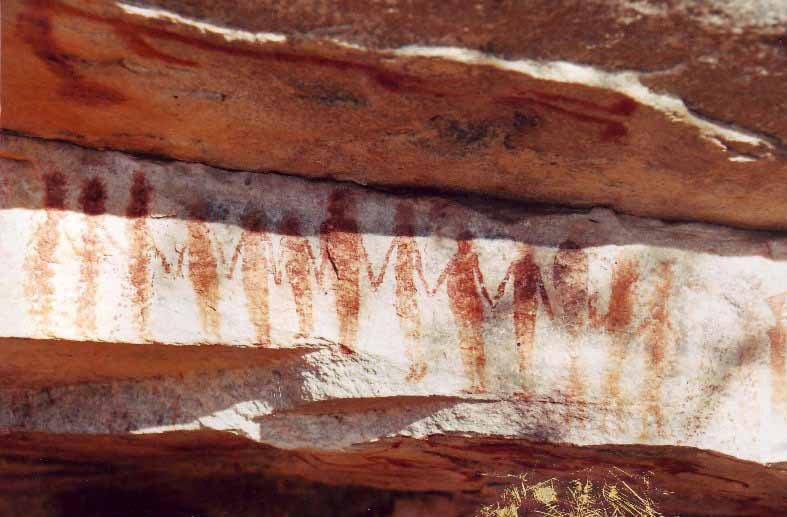
Indigenous Australian artists often choose a vivid and earthy colour scheme that mirrors the dyes of the natural world. Commonly employed are ochre pigments, which come from natural earth minerals. Varied Australian locations have different kinds of Aboriginal art, each connected to a particular community. For instance, bark painting is more common in Arnhem Land, whereas dot painting is the hallmark of Western Desert art. Many Aboriginal artists have embraced contemporary shapes and experimented with new materials and processes, even as traditional styles continue to be popular. Native American contemporary art is still developing, fusing conventional components with modern themes.
Aboriginal Dot Painting
Aboriginal Dot Painting is a unique type of art originating from the Indigenous peoples of Australia, especially those living in the central and western desert regions. This art is distinguished by the elaborate patterns and designs made with tiny dots. Applying the dots meticulously to the canvas or other surfaces creates a visual language that translates cultural meanings, stories, and symbols. In Aboriginal Dot Paintings, the placement of the dots and each dot itself have distinct symbolic meanings. These symbols represent the natural world, ancestors, dreamtime tales, and cultural knowledge. The artists communicate their cultural identity and link to the land through this visual language.
Gond Tribal Painting
The Gond tribe, mainly distributed in the central regions of India, including the states of Madhya Pradesh, Chhattisgarh, Maharashtra, and Odisha, is the source of the ancient Indian tribal art known as Gond Tribal Painting. The Gond people have a rich cultural history, and their relationship to mythology, the natural world, and spirituality is strongly reflected in their art. Detailed and colourful representations of plants and animals characterise Gond’s art. Artists frequently depict animals, birds, trees, and other environmental features as inspiration from the natural world. Numerous Gond paintings depict folktales and mythological stories. The painters depict gods, goddesses, mythical animals, and folktales that have been passed down through the ages using their visual language.
Aboriginal Art Symbols And Meanings
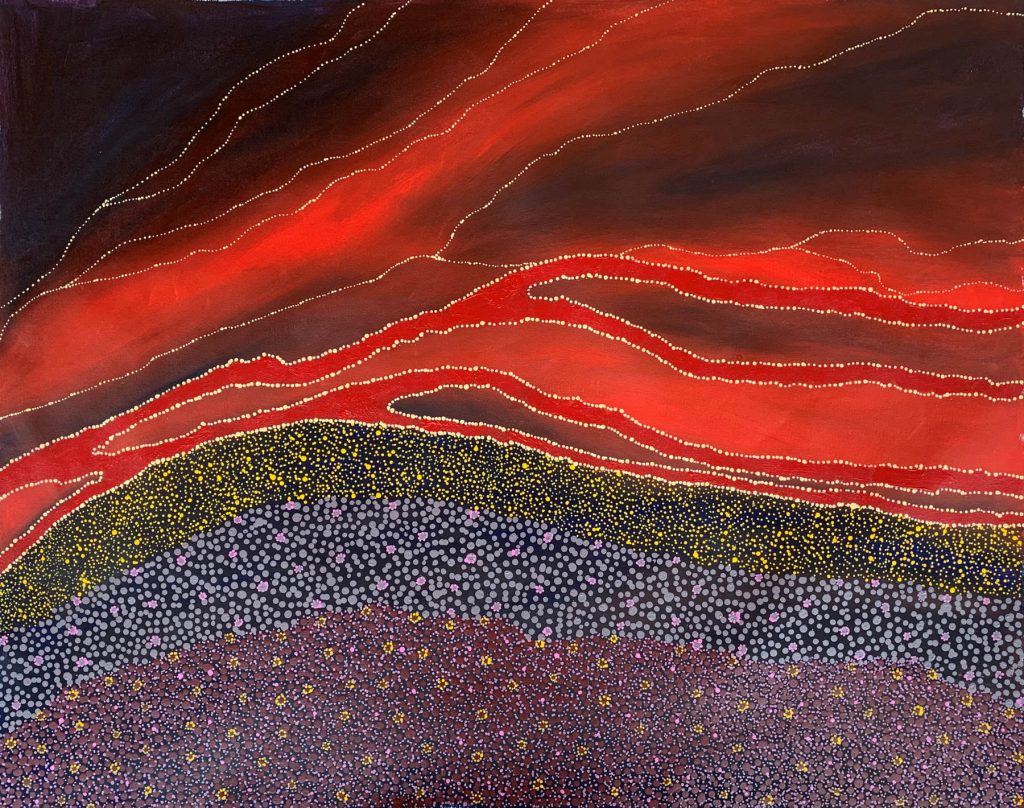
Symbols in Indigenous Australian art have profound cultural and spiritual significance, and the art form is rich in symbolism. These symbols communicate customs, myths, and cultural knowledge that originated in the Dreamtime, also known as the Dreaming, when ancestors created the universe. Certain symbols are widely used and recognised throughout diverse locations, even if the meanings of symbols can change amongst Aboriginal cultures. A circle fundamentally represents a meeting spot or camping. Additionally, it might represent important sites like ritual grounds or waterholes. Certain animals have distinctive tracks, and the depiction of these creatures in Dreamtime tales might symbolise their presence. Kangaroo Dreamings, for instance, might be indicated by kangaroo tracks.
Aboriginal Weaving Facts
Indigenous Australians practise the traditional and culturally significant craft of Aboriginal weaving. Generations of people have learned the craft of weaving, which is essential to producing artistic and valuable objects. Native American weavers employ a range of organic materials they gather from their immediate surroundings. Plant fibres, such as those from reeds, rushes, and native grasses, are common materials. Bark, feathers, and animal sinew are sometimes used in weaving traditions. Weaving fulfils both practical and aesthetic functions. Weaved goods have historically been used for carrying, storing, and gathering food. They are involved in storytelling, ceremonies, and the passing down of traditional knowledge. The weaving of items is an intricate part of Aboriginal tribes’ traditional traditions.
Indigenous Australian Art
Indigenous Australian art frequently focuses on the Jukurrpa, the Dreamtime or Dreaming. Dreamtime is when ancestors formed the earth, its animals, plants, and other features. Dreamtime stories are portrayed in a lot of artwork, and they are crucial to comprehending Indigenous Australians’ spirituality and sense of cultural identity. Various symbols represent distinct meanings associated with Dreamtime tales, ancestors, and cultural customs. Symbols for plants, animals, waterholes, and other holy places can all be found in iconography.
Cross-hatching is the technique of using crossing lines to create textures and patterns in artwork. In their artwork, some Aboriginal groups—such as the Yolŋu people of Arnhem Land—often employ this technique. Indigenous rites and rituals are fundamentally based on the use of art. Ceremonial art includes dance, music, body painting, and the creation of temporary installations and sculptures. These visual representations are crucial in maintaining cultural traditions and passing on knowledge to upcoming generations.
Aboriginal contemporary art
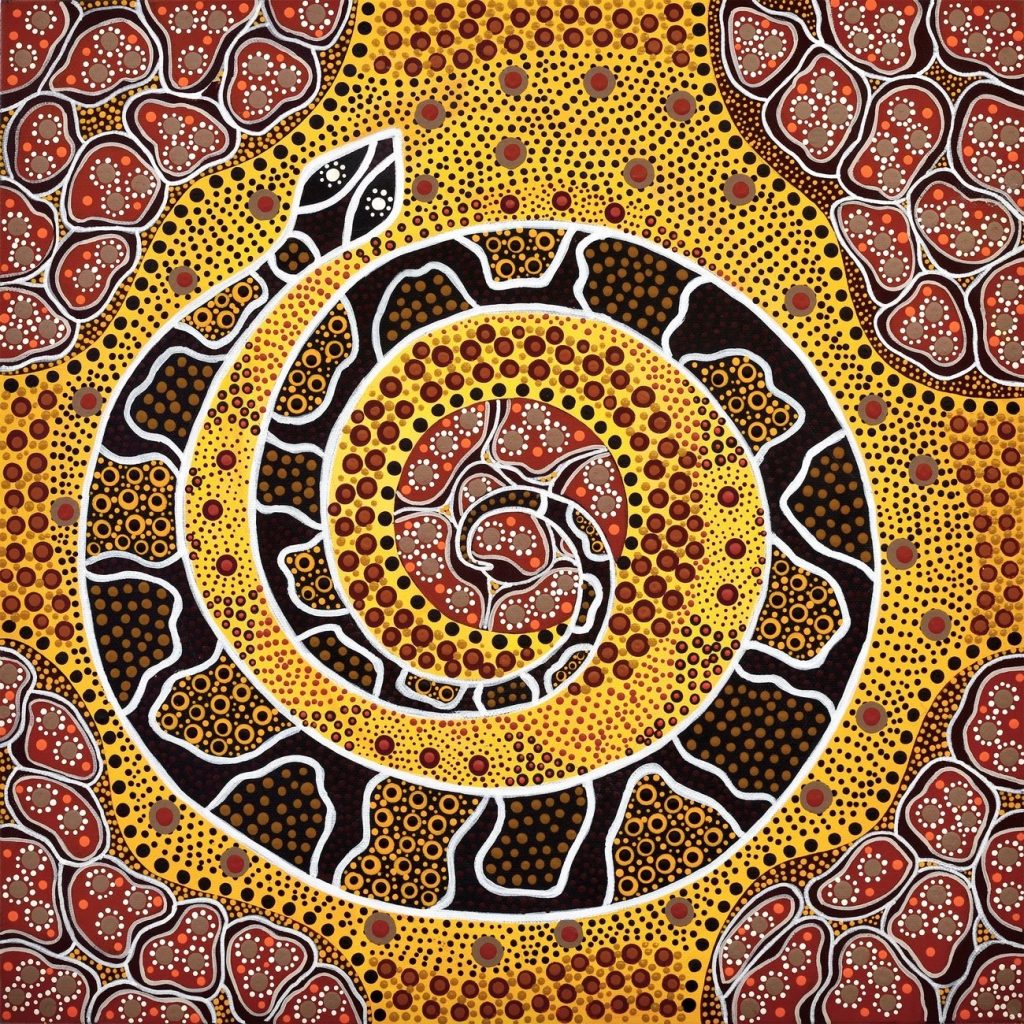
Australia’s contemporary Aboriginal art is both ancient and modern at the same time. Its origins are rooted in the Dreamtime’s distant past. Today, when it is elaborated in a certain way, it makes people happy all over the world; nevertheless, at the same time, issues with its interpretation have arisen both within and in the Western world. The history of Aboriginal artworks from abandoned Central and Western Australia is complicated. They are based on ceremonial ground designs elaborated during rituals, for instance, in ceremonies of initiation, which are traditionally realised with an accompaniment of chanting and dancing.
Without Australia’s suppressed Aboriginal past, who have begun to reclaim their own culture and customs and adapt them to new social and economic circumstances, contemporary Aboriginal art would never have been possible. This is not to say that Australian desert paintings or modern Aboriginal art are similar to their ritual predecessors. Despite having a lengthy history, Aboriginal paintings on canvas are a relatively new phenomenon.
The striking display of Aboriginal art bears witness to the rich cultural legacy of Indigenous Australians. This art form, which has its roots in customs dating back more than 40,000 years, is a vibrant representation of the Dreamtime, a spiritual bond with the land, and the complex tales passed down through the ages. Aboriginal art is a visual language that captures Indigenous cultures’ identity, spirituality, and resiliency. It ranges from the famous dot paintings that first appeared in the 20th century to the prehistoric rock art seen all over the continent.
Indigenous art serves as both a visual treat and a vehicle for preserving and disseminating cultural traditions. It bridges the past and present by offering a window into the Dreamtime stories, the significance of Country, and the lasting links between Indigenous Australians and their ancestral territories.

